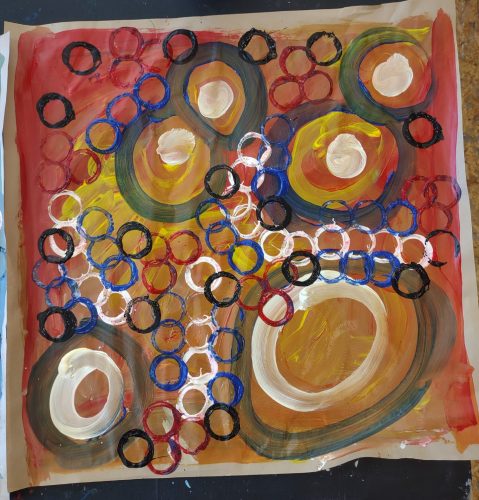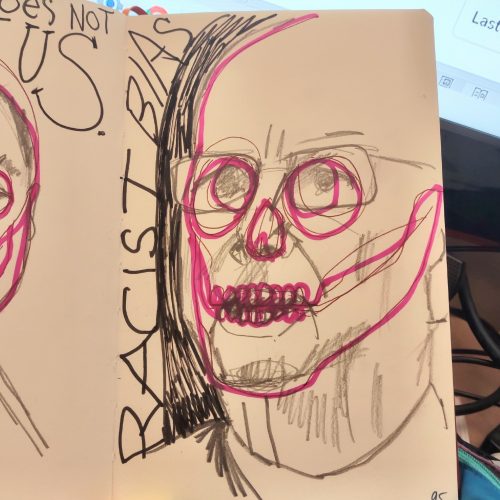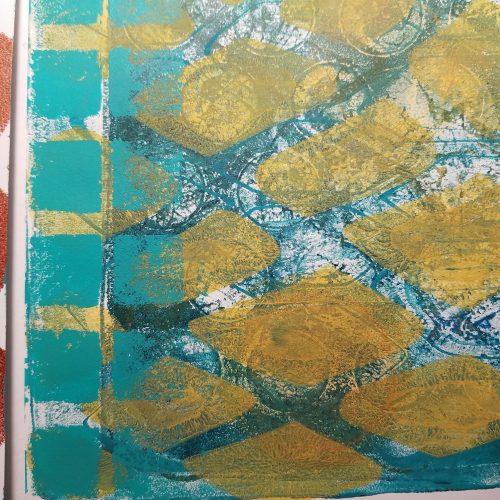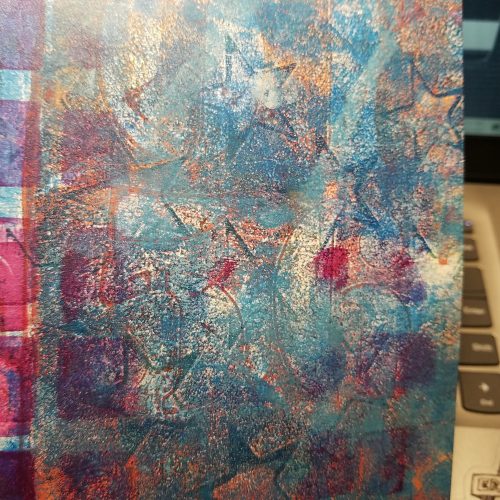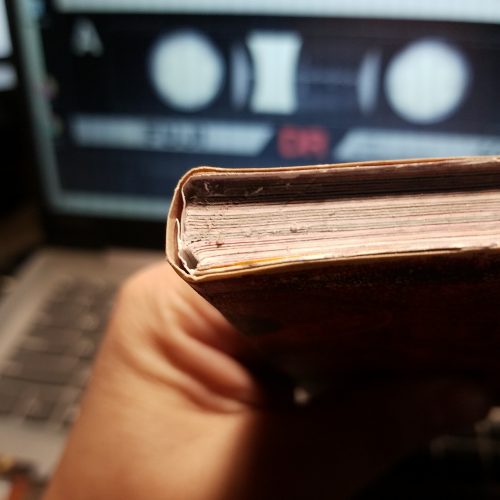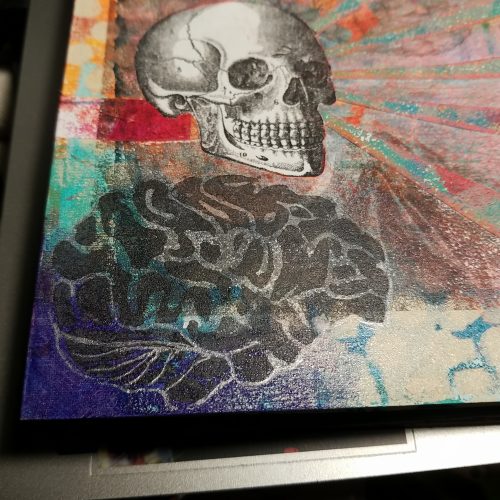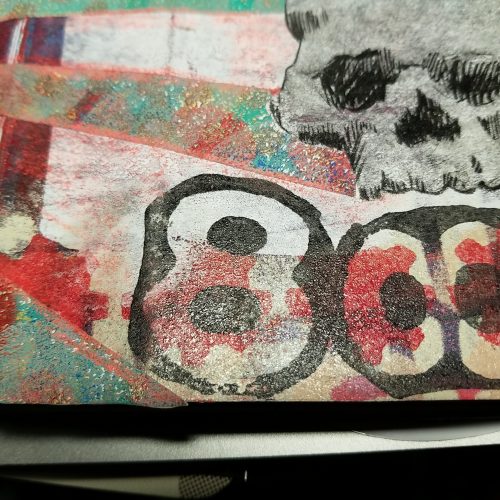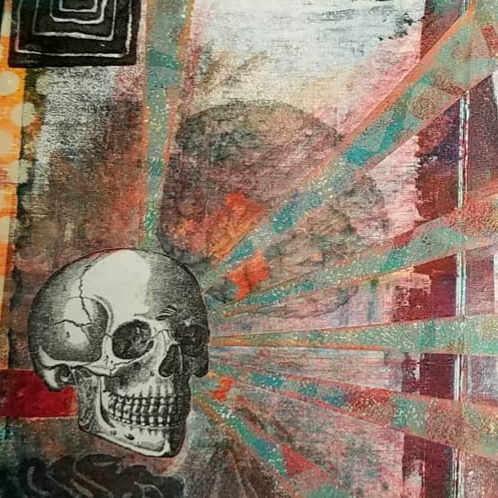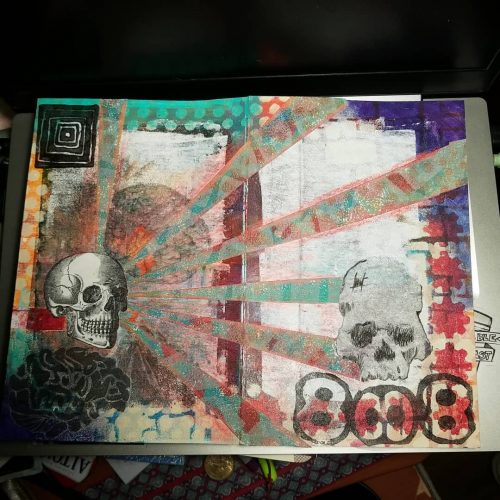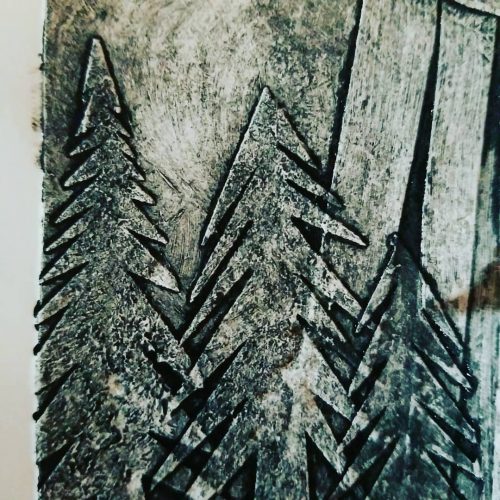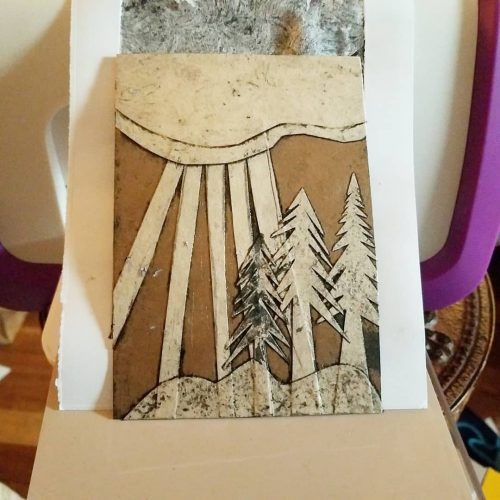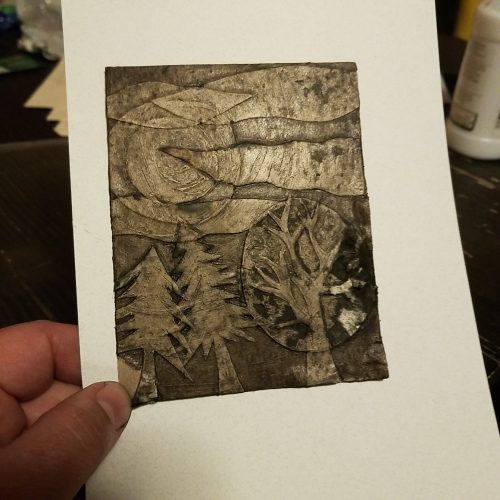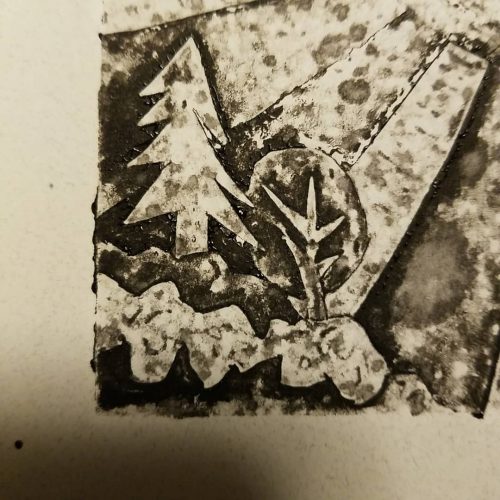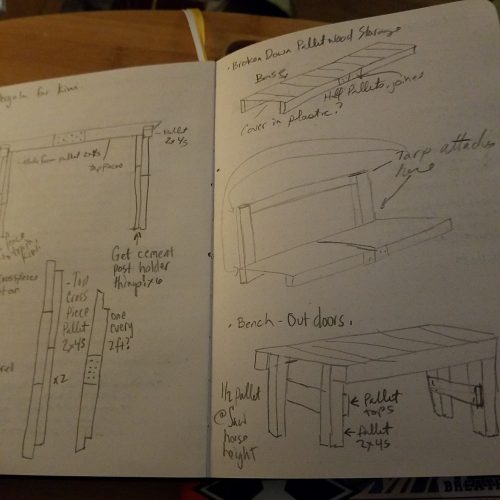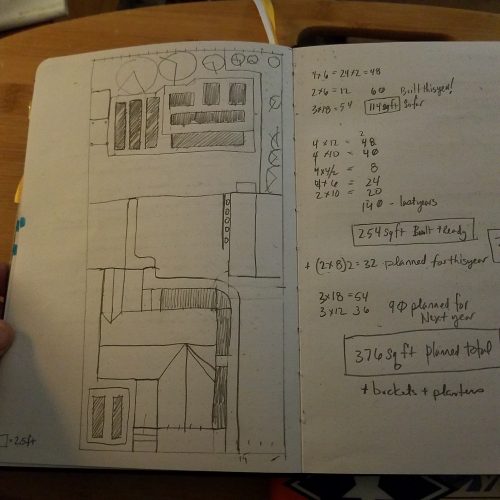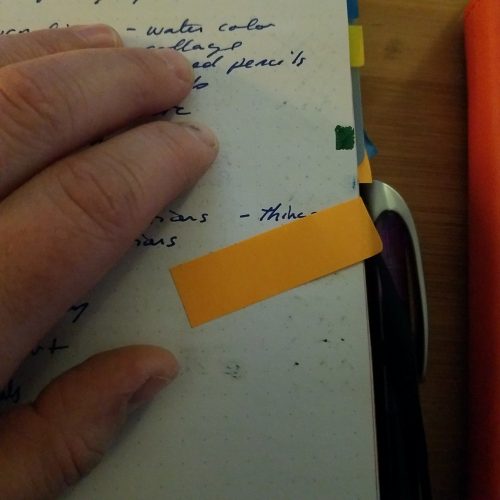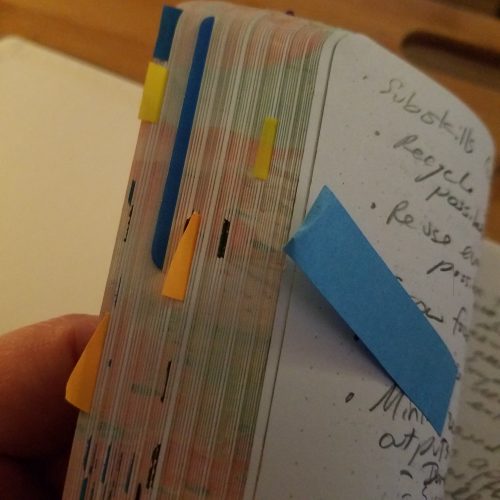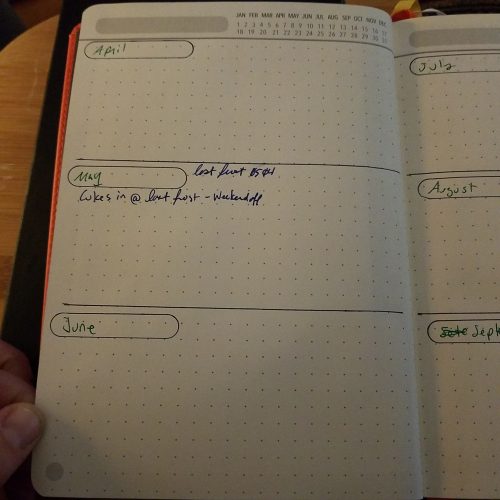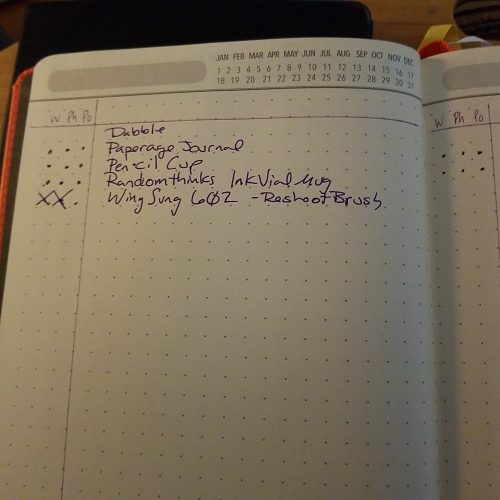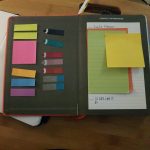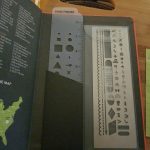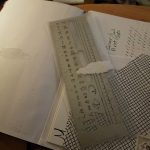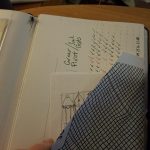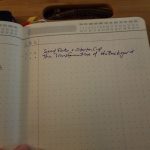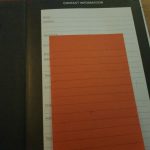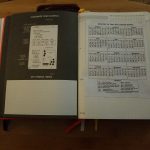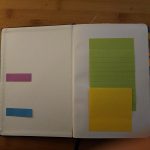There is no way to keep a notebook that is perfect for every person. There is only the perfect way for each person. That is to say, keeping a notebook is highly personalized. My method of a pocket notebook and 3×5 cards alongside a sketchbook (currently also functioning as my ETEW Journal) and a separate work sketchbook would not work for most people. Hell most creative people merge home and work into one planner and notebook- especially if they freelance. That doesn’t work for me because I need to create a division between work and life- I need work- life balance.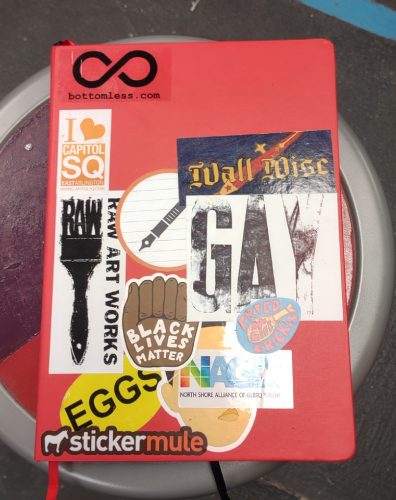
What do these different notebooks look like? (I’ll be using notebook and sketchbook pretty interchangeably from here.) My work sketchbook is an A4 (8×10) red Talens sketchbook covered in stickers. Eventually it will have doodles too. I use a larger sketchbook at work because I use it in classes to teach kids about sketching. We also work larger than I do at home, so my sketches are correspondingly larger. I purchased this sketchbook because it was inexpensive and also the bright red cover could be easily found on any table in my studio.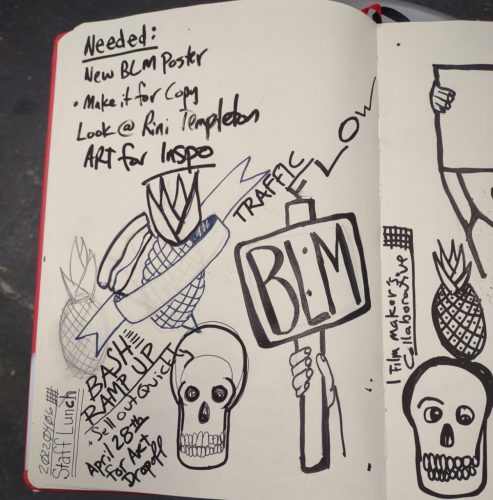
The work sketchbook is a place where I capture meeting and course notes. I doodle and jot down notes and I try to keep each meeting to a single page, but sometimes I use 2 pages. Occasionally I work on a page shared with another meeting , especially if the previous meeting didn’t need a lot of notes.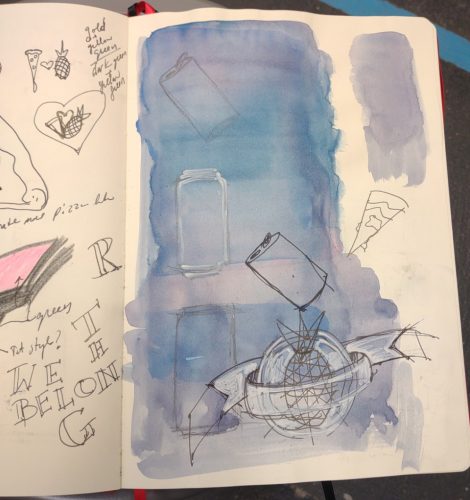
I’ll be the first person to say that my meeting and other types of notes won’t make sense to most folx. I tend to draw the speakers and doodle important words and points in funky lettering. I see the goal of taking notes as a way of jogging my memory. For work we have a notetaker for each meeting, a quick look at the notes will get me the info I need. For trainings I take notes that are a little more detailed but are mostly to jog my memory. I save a copy of any printables to the cloud or my computer and call it good. Generally I believe that info can be pretty easily looked up if I search, but I have to jog the memory of that instruction first.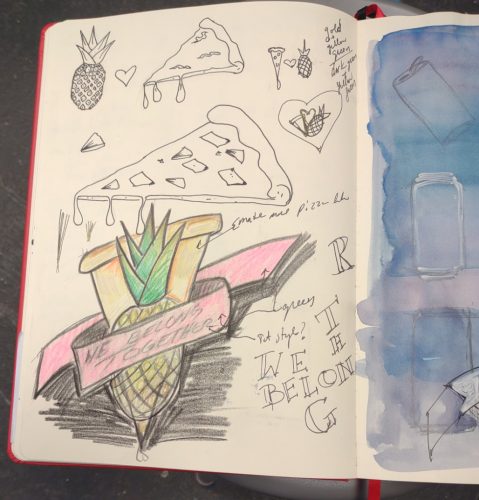
My home sketchbook is a B4 (6×9 ish) Hand Book sketchbook. They’ve changed the name of them several times over the years. Speedball seems to have either purchased or is handling distribution of them now. Which is a good thing, for me, they have been my go to commercially made sketchbook for a few years, and better distro is great. The paper is perfect for a wide range of materials.
The pocket notebook is where I gather on the go ideas- things I hear on podcasts, in conversations, phone numbers from students for their parents, notes from books I’m reading and so on. It’s a good capture system. Sometimes these ideas get pulled into my Every Thing Every Where journal or sketchbook, or here as a blog post.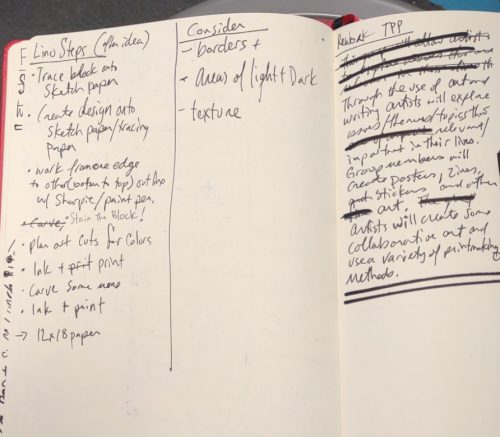
The above is what works for me now. Over the years I’ve used different systems, most documented here and there in this blog. I still like to read about the systems of others. The Take Note Podcast Blog (that’s a mouth full) has had a number of great posts about keeping a notebook where they gather information about authors and creative folx who keep a notebook.
